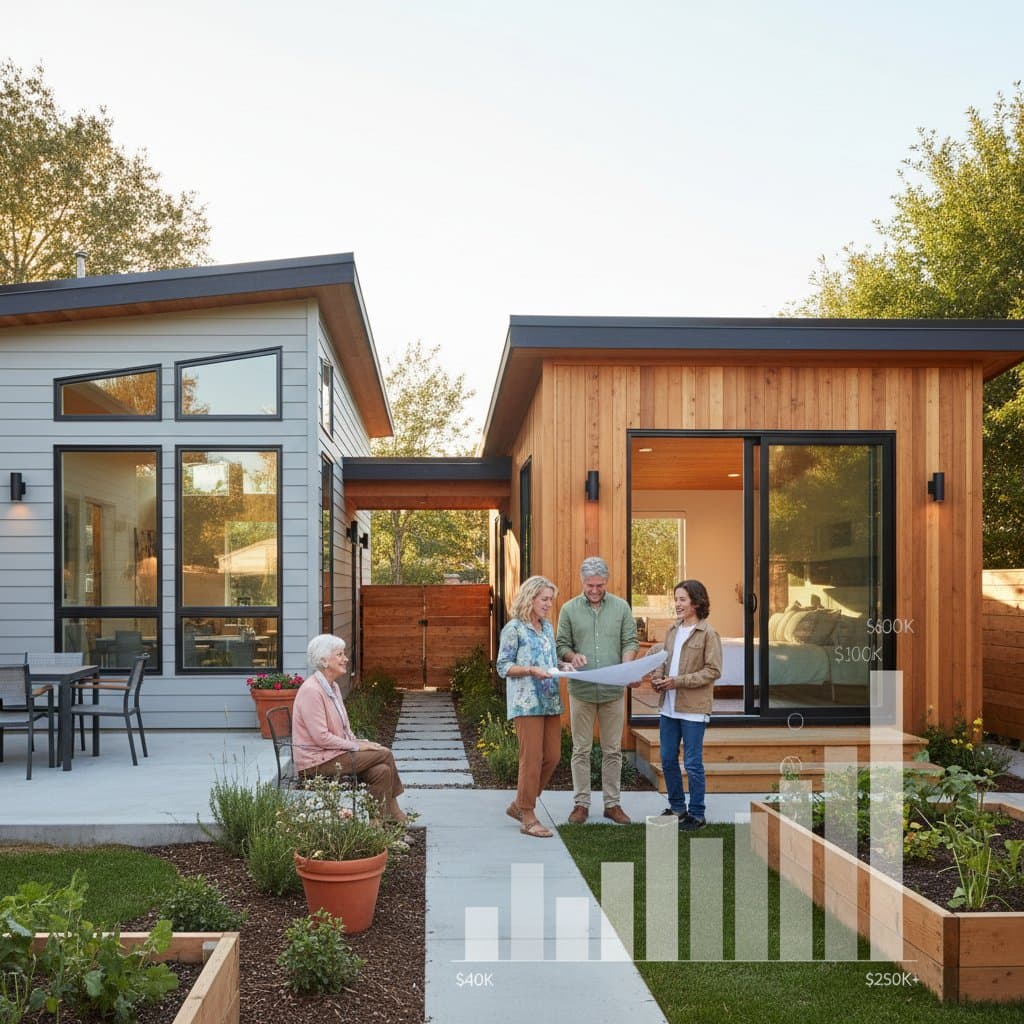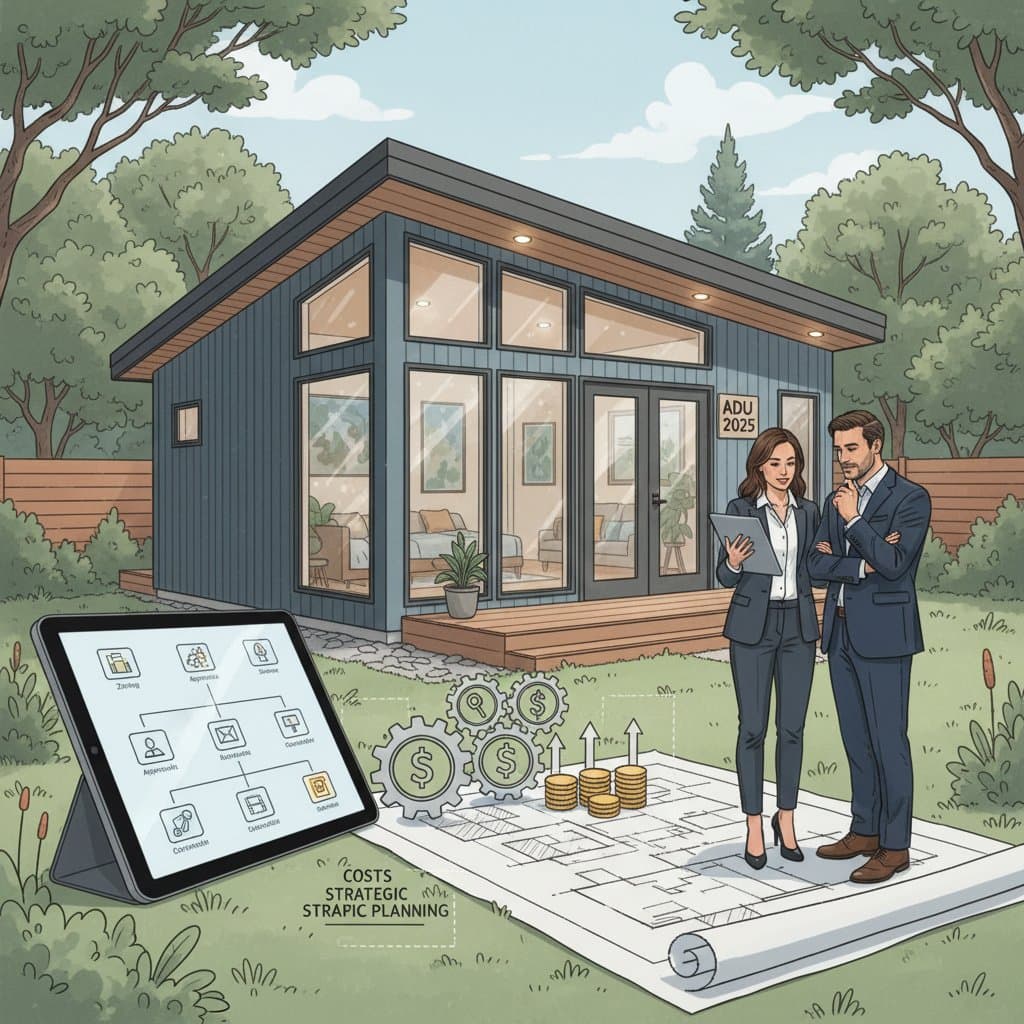Costs of Multigenerational Renovations in 2025
Key Overview
- Multigenerational renovations in 2025 generally range from $40,000 to $250,000, influenced by project scale, location, and complexity.
- Transforming underutilized spaces, such as basements or attics, costs less than erecting new structures.
- Major expenses often stem from plumbing installations, accessibility modifications, and required permits.
- From the outset, incorporate elements that support privacy, safety measures, and potential resale appeal.
Advantages and Disadvantages
Advantages
- These projects enable families to remain in close proximity while preserving personal boundaries through dedicated living areas.
- Properly constructed additions that comply with building codes can significantly increase overall property value.
- They frequently offer a more affordable alternative to purchasing an additional residence.
- Such spaces prove valuable for providing caregiving support or generating supplementary rental income.
Disadvantages
- Initial investments are substantial, coupled with extended timelines for obtaining necessary permits.
- Projects may necessitate zoning evaluations or upgrades to existing utility systems.
- Available yard space or parking areas could diminish as a result.
- Establish explicit family agreements regarding usage rights and shared financial responsibilities to avoid conflicts.
Guide to Planning and Implementation
Essential Planning Resources
- A precise tape measure for accurate measurements.
- Graph paper for manual sketches or digital layout software for detailed visualizations.
- Access to your local zoning map to identify restrictions.
- Reference materials on current building codes.
- A curated list of contacts for contractors and architects.
Timeline and Complexity
- The planning and permitting phases require 2 to 6 months.
- Actual construction spans 3 to 8 months.
- Overall difficulty ranges from moderate to high, depending on the extent of modifications.
Step 1: Evaluate Existing Space
Begin with a comprehensive professional home inspection to assess the structural integrity, electrical wiring, water supply systems, and drainage capabilities. Focus on areas like basements or garages, which lend themselves to cost-effective conversions provided the foundational elements remain robust. Identify any immediate repairs needed to avoid escalating expenses later.
Step 2: Design the Layout
Create detailed sketches that delineate distinct zones for sleeping quarters, kitchen facilities, and bathroom amenities. Ensure each area adheres to minimum standards for ceiling heights, adequate ventilation, and fire safety protocols. Prioritize incorporating a private entrance to enhance autonomy, particularly if multiple generations will share the home.
Step 3: Establish a Realistic Budget
Develop estimates based on project specifics; for instance, a compact in-law suite may commence at approximately $40,000, whereas a fully independent detached unit could surpass $200,000. Factor in an additional 10 to 15 percent contingency for unforeseen challenges, such as soil issues or material price fluctuations. Consult recent local cost data to refine these projections.
Step 4: Confirm Permits and Zoning Compliance
Schedule a visit to your municipal planning department to inquire about regulations governing accessory dwelling units (ADUs) or in-law suites. Pay close attention to limitations on maximum size, setback distances from property lines, and connections to existing utilities. Early clarification prevents costly redesigns or denials.
Step 5: Engage Professional Expertise
For intricate designs, enlist an architect to optimize spatial flow; a structural engineer to verify load-bearing capacities; and a general contractor to oversee the entire build. Request detailed written proposals that break down costs by line item, including timelines and warranties, to facilitate informed comparisons.
Step 6: Address Utility Requirements
Installing independent water and electrical lines promotes greater privacy and self-sufficiency, though it increases expenses. Alternatively, integrating with the main home's systems reduces costs but may limit operational independence. Evaluate energy efficiency options, such as solar tie-ins, to offset long-term utility bills.
Step 7: Proceed with Construction or Conversion
Adhere strictly to the approved blueprints throughout the build. Secure permits for each phase and arrange for mandatory inspections to validate progress. Maintain organized records of all documentation, as these prove essential for future property transactions or insurance claims.
Step 8: Conduct Thorough Inspections and Testing
Prior to occupancy, rigorously test electrical outlets, smoke detection systems, and plumbing fixtures for functionality. Verify that accessibility features, like widened doorways or ramp installations, operate as intended if included in the design. Address any deficiencies promptly to ensure seamless integration.
Step 9: Select and Install Finishing Touches
Opt for resilient flooring materials that withstand heavy use, energy-efficient LED lighting to minimize costs, and lever-style door handles that accommodate varying mobility levels. Apply soundproofing insulation and seal all gaps to mitigate noise transmission between living areas.
Step 10: Verify Safety and Code Adherence
Mandate the installation of ground-fault circuit interrupter (GFCI) outlets in wet areas, smoke and carbon monoxide alarms in every sleeping zone, and emergency egress windows or doors as stipulated by code. These elements represent non-negotiable safeguards that protect occupants and preserve project viability.
DIY Approaches Versus Professional Services
When DIY Is Appropriate
- Limit efforts to non-structural tasks like painting walls, laying flooring, or installing trim.
- Handle straightforward installations such as cabinetry or basic fixtures if prior experience exists.
- Tackle minor carpentry or drywall repairs with proper tools and safety gear.
When to Hire Professionals
- Any alterations involving structural modifications or load-bearing walls demand expert intervention.
- New installations of plumbing, gas lines, or electrical systems require licensed specialists.
- Situations mandating engineer-stamped plans or official inspections necessitate professional oversight.
Importance of the Decision
While DIY methods reduce labor expenses, errors risk invalidating insurance coverage or halting permitting processes. Professionals guarantee adherence to critical standards for fire separation, accessibility, and overall structural safety, safeguarding both the investment and family well-being.
Viable Alternatives
Basement Suite Conversion
This option suits rapid transformations with relatively low costs, though it often contends with reduced natural light. Enhance appeal by adding egress windows and moisture-resistant materials to combat common basement challenges.
Garage Apartment Development
It provides strong privacy benefits but requires thorough structural assessments to ensure proper fire-rated separations. Consider reinforcing the foundation and upgrading insulation for year-round comfort.
Detached Accessory Dwelling Unit (ADU)
This delivers the utmost independence and boosts resale potential, albeit at the highest price point. Site it strategically to maximize lot utilization while complying with setback rules and utility access.
Selection hinges on property dimensions, regional climate conditions, and specific family dynamics to align with long-term needs.
Pre-Launch Checklist
- Inspect the structure and existing utilities for viability.
- Verify zoning allowances and secure necessary permits.
- Outline layout requirements and accessibility priorities.
- Establish a detailed budget with a 10 to 15 percent reserve fund.
- Obtain bids from at least three qualified professionals.
- Incorporate soundproofing measures and privacy enhancements.
- Select durable, low-maintenance finishes.
- Arrange inspections after each construction phase.
- Develop a collaborative plan for ongoing maintenance.
Achieving Lasting Family Spaces
Identify the core motivation behind the project, be it elder care provisions or adaptable living arrangements, to inform every design and financial decision. Leverage underused areas initially to conserve resources, then allocate funds toward superior insulation, intuitive lighting setups, and robust safety infrastructure that endures for years. Balance self-directed tasks with expert guidance to navigate complexities efficiently.
Multigenerational renovations demand meticulous preparation alongside skilled execution. By prioritizing privacy, accessibility, and full regulatory compliance, these endeavors secure financial returns and enhance familial harmony. Upon permit approvals and successful final inspections, the result transcends mere expansion; it cultivates a resilient home that evolves with life's stages while nurturing enduring bonds.



